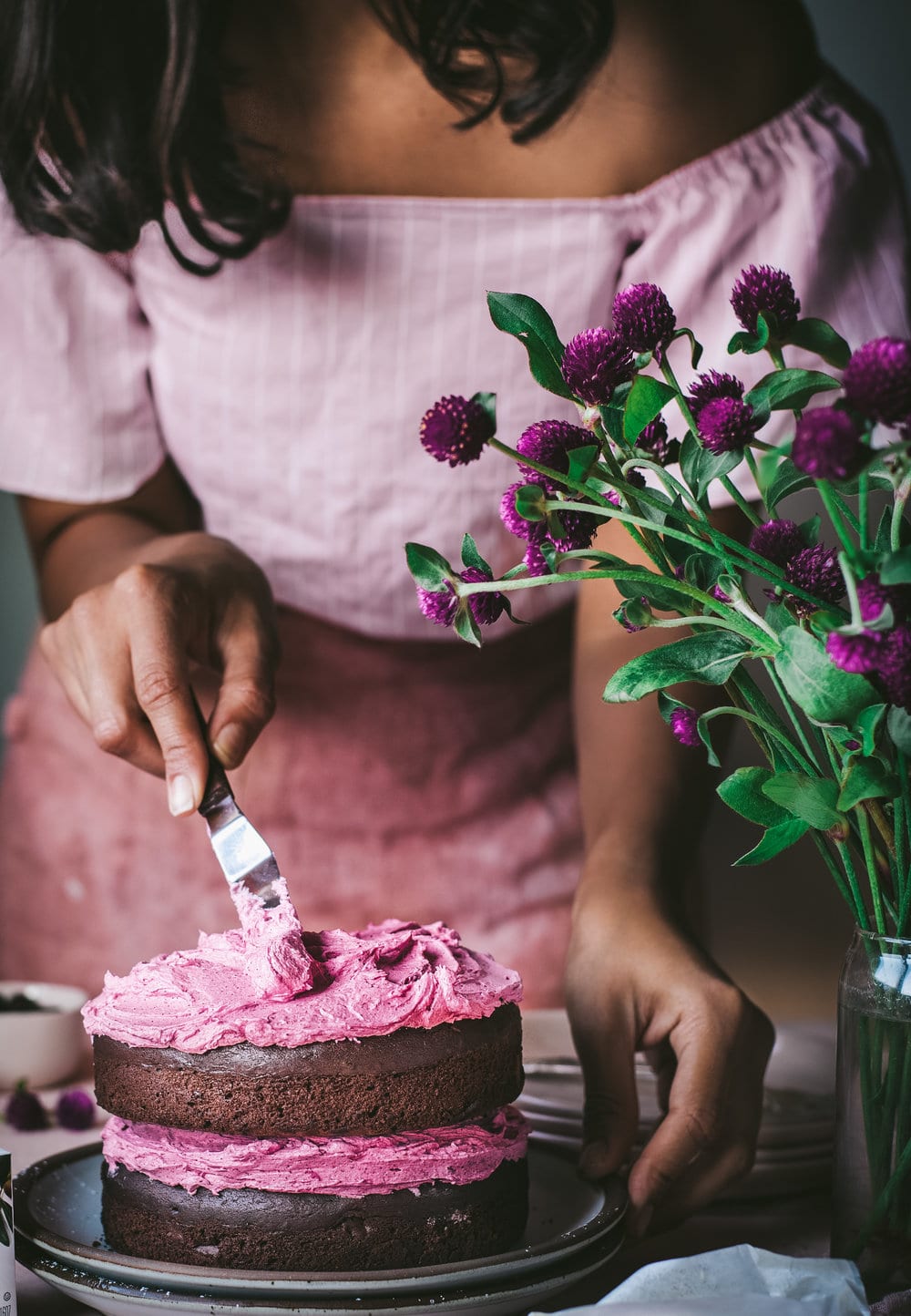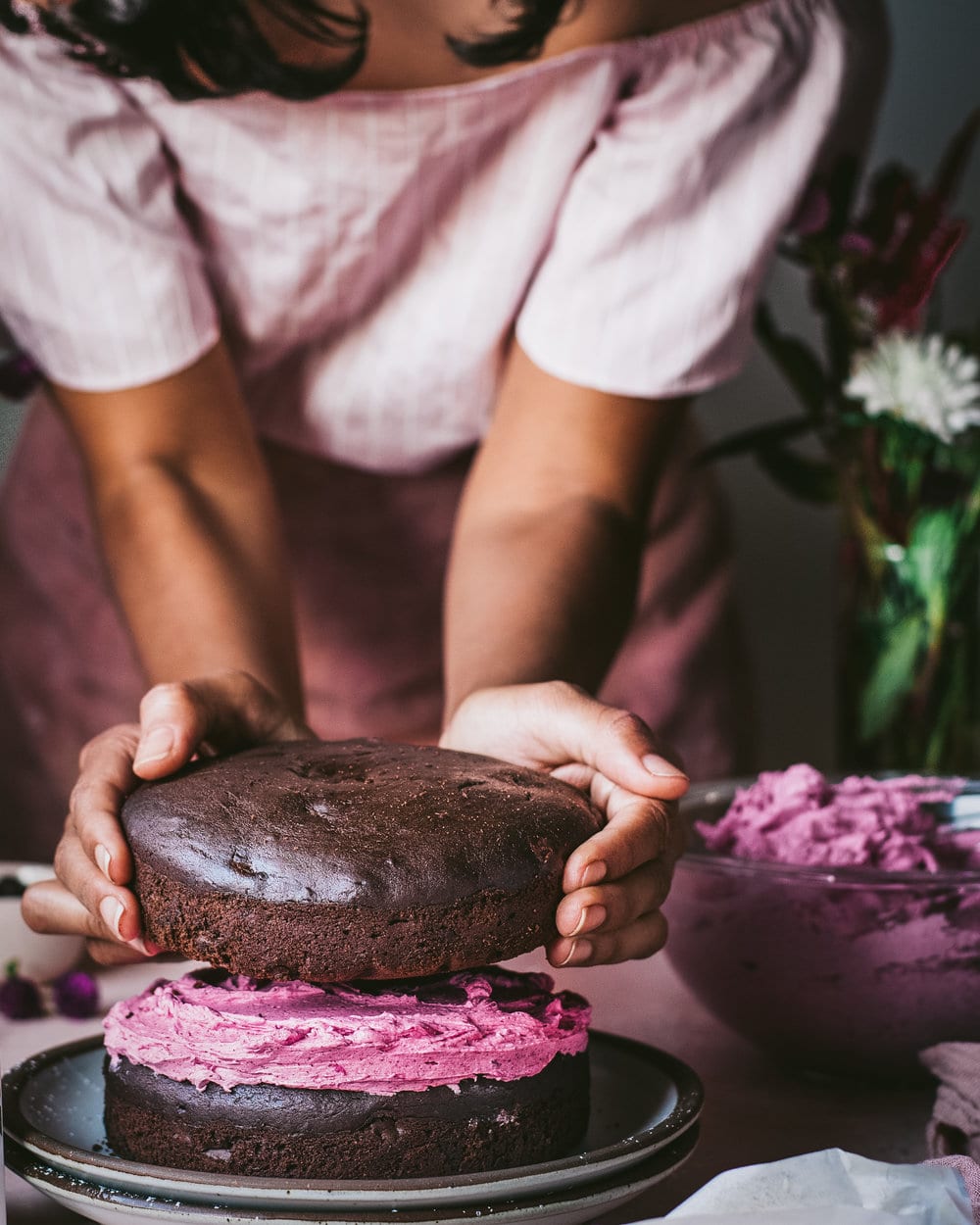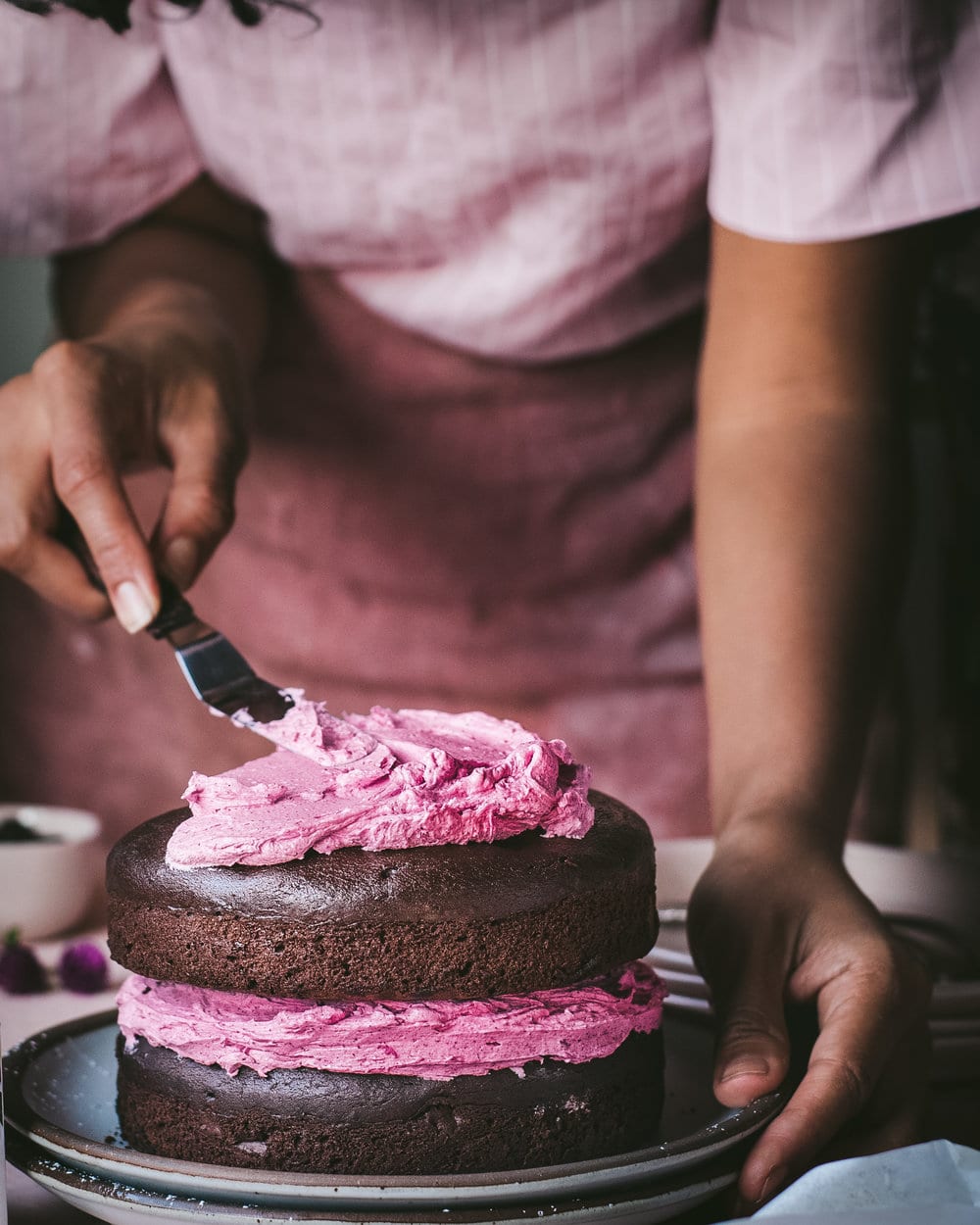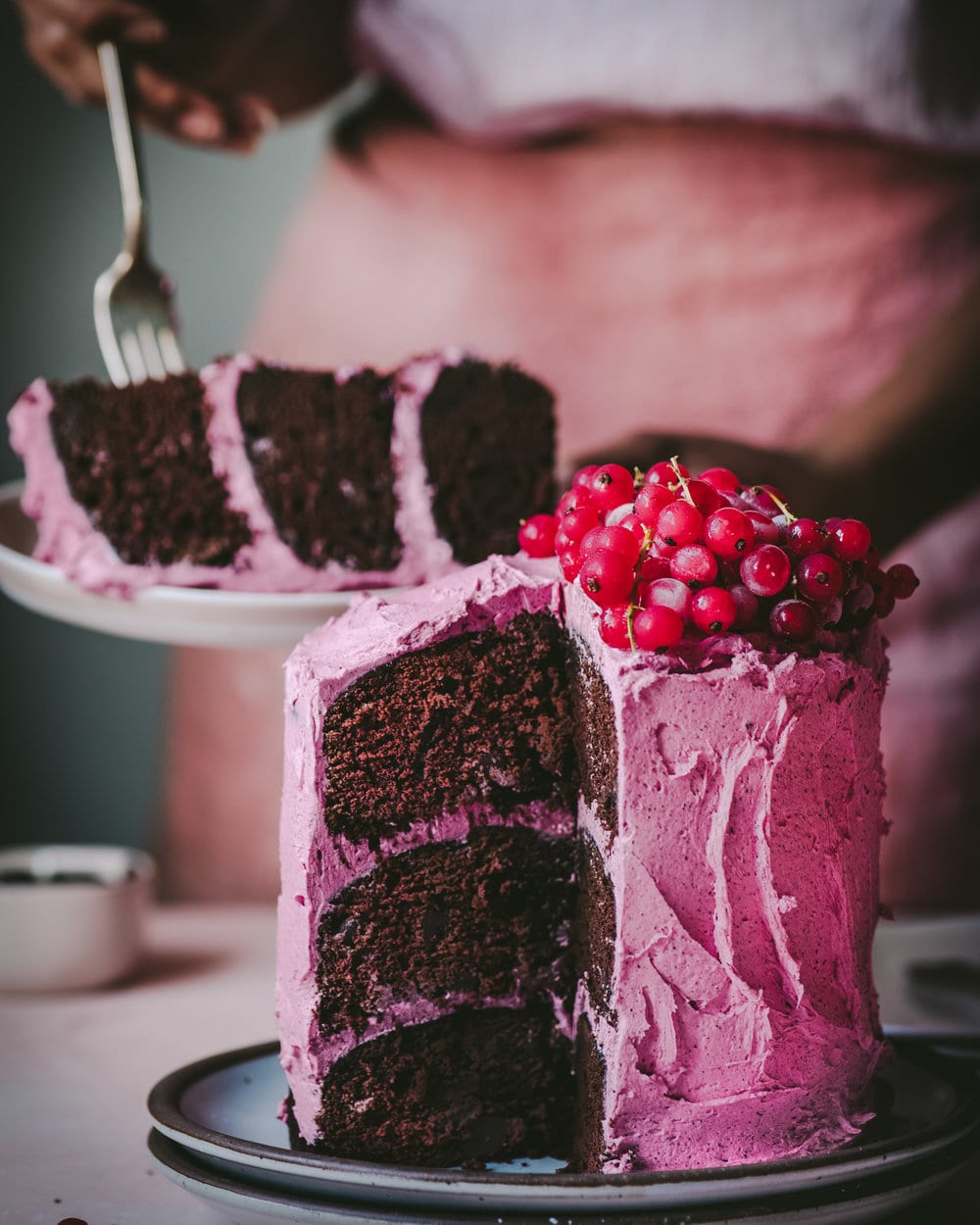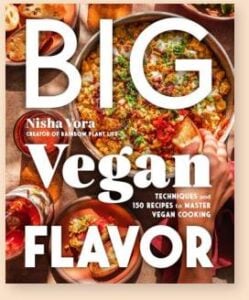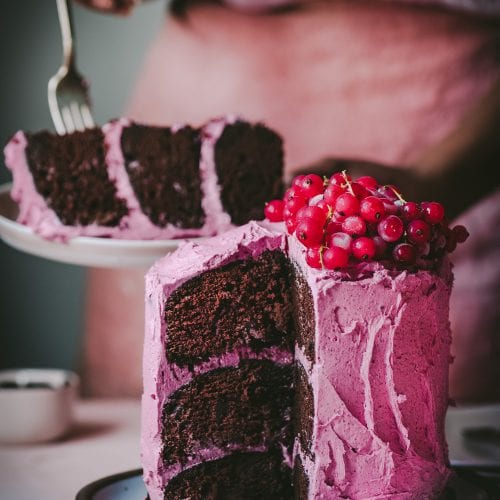While I love making healthier versions of comfort food, sometimes a true decadent indulgence is merited, amirite? But the thing is, when I want a treat, I usually gravitate towards brownies and cookies, or pie and tarts. Not really cakes. That might come as a surprise, but most cakes are not great. They are dry and dense and not the most diverse in terms of flavor or texture. But over the last few years of recipe testing and experimentation, I learned how to bake a damn good cake! One that is tender and moist, not dense or dry. One that has textural and flavor integrity.
Tips for Baking Vegan Chocolate Layer Cake
Flour
First, the type of flour matters. This isn’t a gluten-free cake and I’m not going to pretend I’m an expert on gluten-free cakes, but generally speaking, cakes made with gluten-containing flour are going to be lighter in texture than than gluten-free cakes. If you have a gluten allergy, of course, I am not encouraging you to go ahead and test it. But if you can tolerate gluten, use the gluten-containing flour! You’re eating cake, not broccoli. It’s supposed to be a treat. Secondly, baking with cake flour (as opposed to all-purpose flour) makes cakes more tender, leaving them with a lighter crumb and texture. I have baked this cake with both all-purpose flour and cake flour, and they are both delicious, but if you are looking for the lightest texture possible, use cake flour.
Leaveners
The most commonly used leaveners in vegan baking are baking soda, baking powder, and apple cider vinegar. Yes, apple cider vinegar! When ACV is mixed with a plant-based milk, it starts to curdle after a short period of time, similar to buttermilk. And that begins a mutually symbiotic relationship! First, when you use baking soda, it requires a little acid to start bubbling (i.e., to start reacting), and the acidity in apple cider vinegar is a perfect neutral-tasting option (lemon isn’t a great idea for chocolate cakes, and white vinegar is too harsh in taste). And the tangy buttermilk (plant-based milk with ACV) reacts with baking soda (or baking powder), it helps activate the leavening action of baking soda, enhancing the amount of rise in your cakes. And finally, the alkaline nature of baking soda cancels out any sour buttermilk flavor so you don’t end up with an unwanted tangy taste. If however, you’re making a recipe where you want some of that subtle tang flavor (perhaps a lemon cake or a buttermilk pancakes), you’d want to also include some baking powder. That’s because using baking soda alone will completely neutralize the buttermilk’s acidity/tanginess. Adding in some baking powder (which has its own acid, but not nearly as much as baking soda), then, allows some of that tang to remain in the batter.
Chocolate
There are a few ways to make chocolate cake taste even chocolatier (i.e., even better). First, you might notice that many chocolate cake recipes call for adding boiling water to the batter. This is because the boiling water helps “bloom” the cocoa powder. Blooming means mixing cocoa powder with a hot liquid (such as boiling water or hot coffee). This serves two purposes. First, it helps dissolve the cocoa powder and prevents it from clumping, which it has a tendency to do. Second, blooming releases the flavor within cocoa powder more intensely, resulting in more chocolatey-tasting cakes. Another way to make your cake taste even richer is by adding some coffee. In this recipe, I use espresso powder and boiling water, which, well turns into hot coffee. Espresso amplifies the deep, rich flavor of chocolate without adding any noticeable coffee flavor. I learned that tip from the goddess Ina Garten 15 years ago! And finally, I love adding an extra boost of chocolate to the cake in the form of chopped dark chocolate or chocolate chips. I fold those in at the end, and they not only bring extra rich chocolatey goodness to the cake, but they also bring an interesting textural component. Some of the chocolate chunks/chips will almost melt into the cake, which means rich fudginess (always a good thing), but other chunks/chips will stay firm (especially larger sized ones), providing a nice little solid piece of chocolate to bite into. I hope you enjoyed those tips for making a tender, light and flavorful vegan chocolate cake! And as for the frosting, it’s a pretty simple buttercream frosting (except the butter is vegan)! Just make you use softened room temperature vegan butter! And as for the hibiscus flavor, if you can’t find hibiscus powder or don’t want to buy it, you could also crush up some freeze-dried raspberries and use that instead. I find that the sweet-tart flavor from the hibiscus pairs really nicely with and balances the richness of the buttercream frosting! That’s about it for this Vegan Chocolate Layer Cake. If you make it, be sure to tag me with your recreations on instagram!
Big Vegan Flavor
Techniques and 150 recipes to master vegan cooking.
